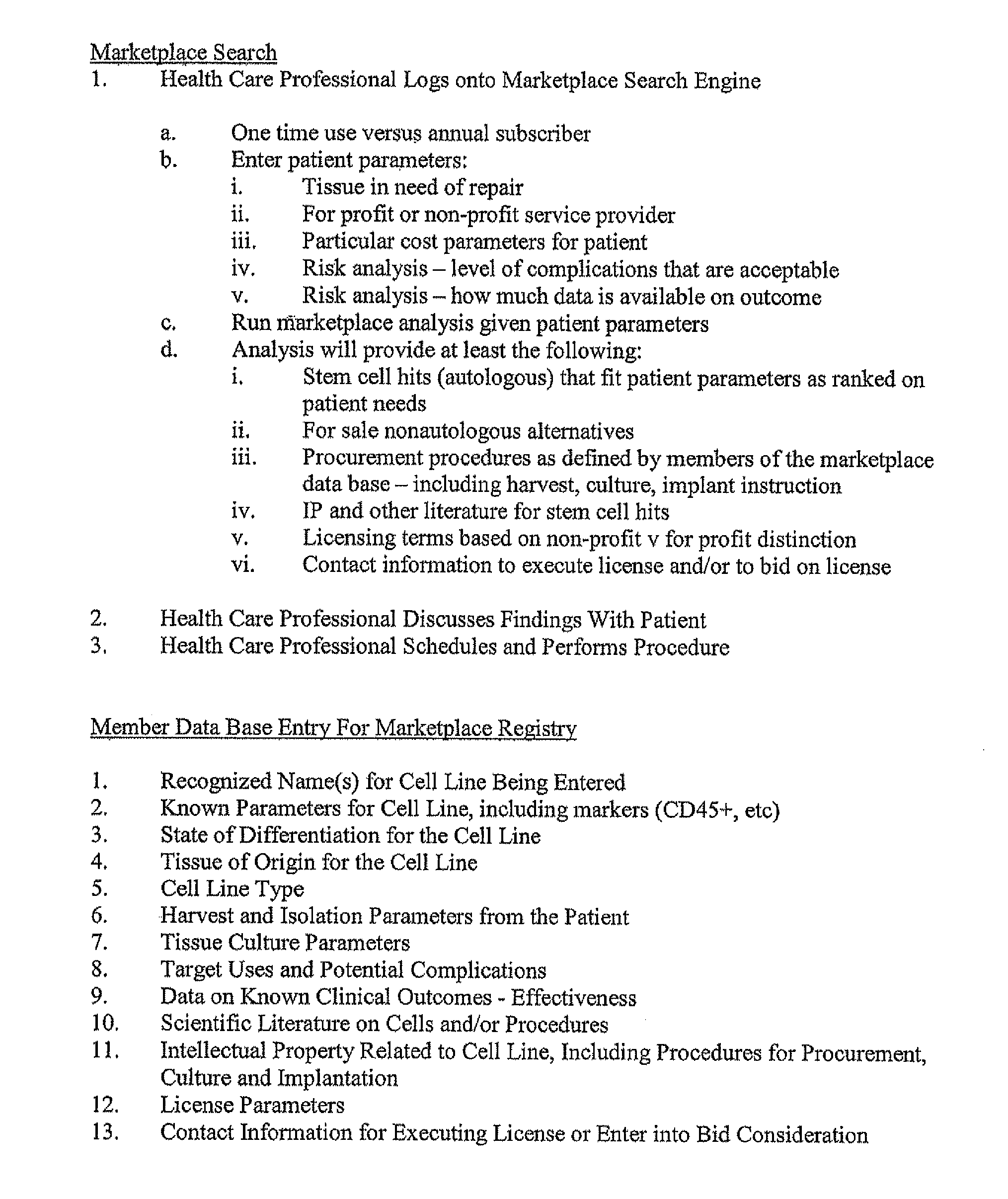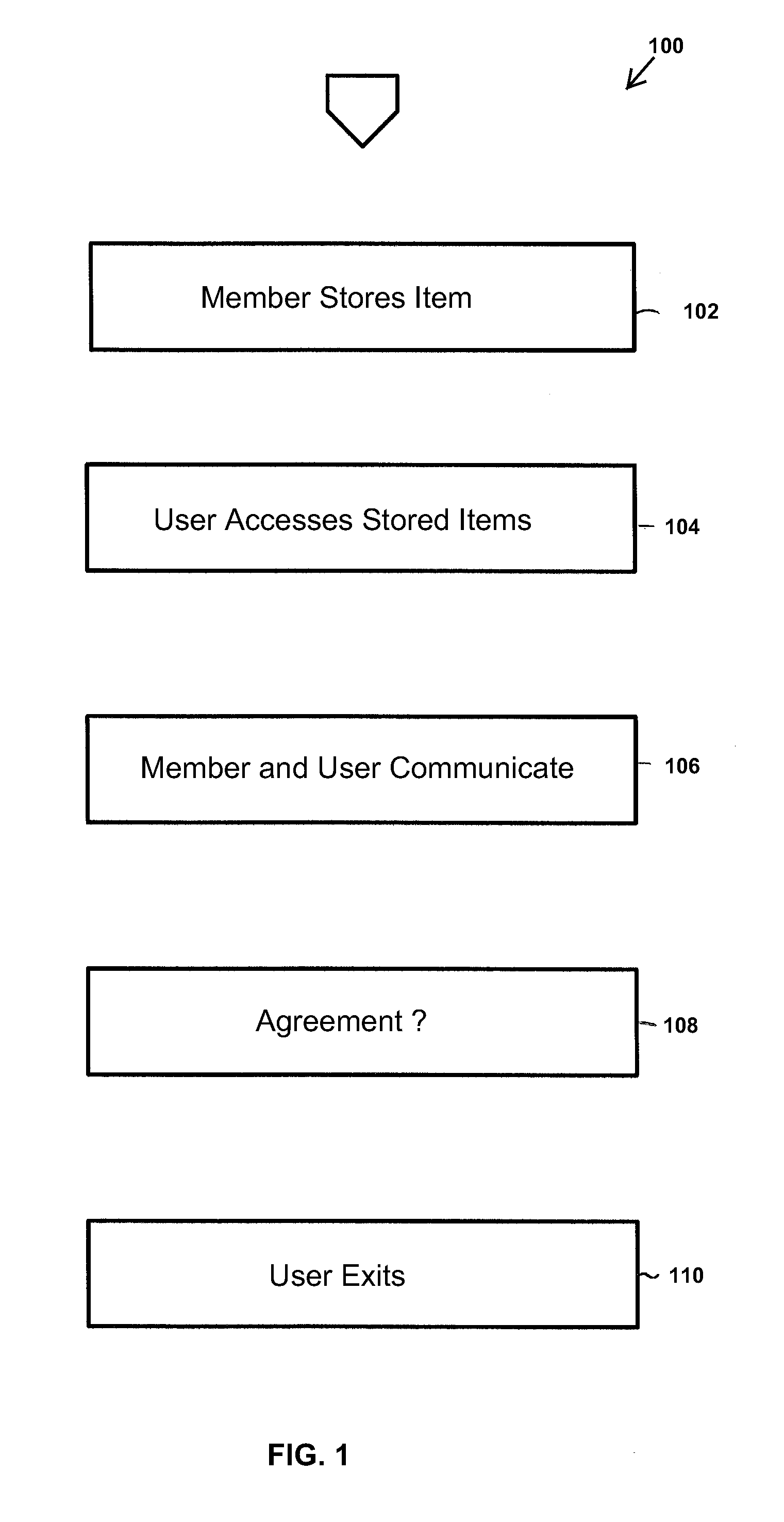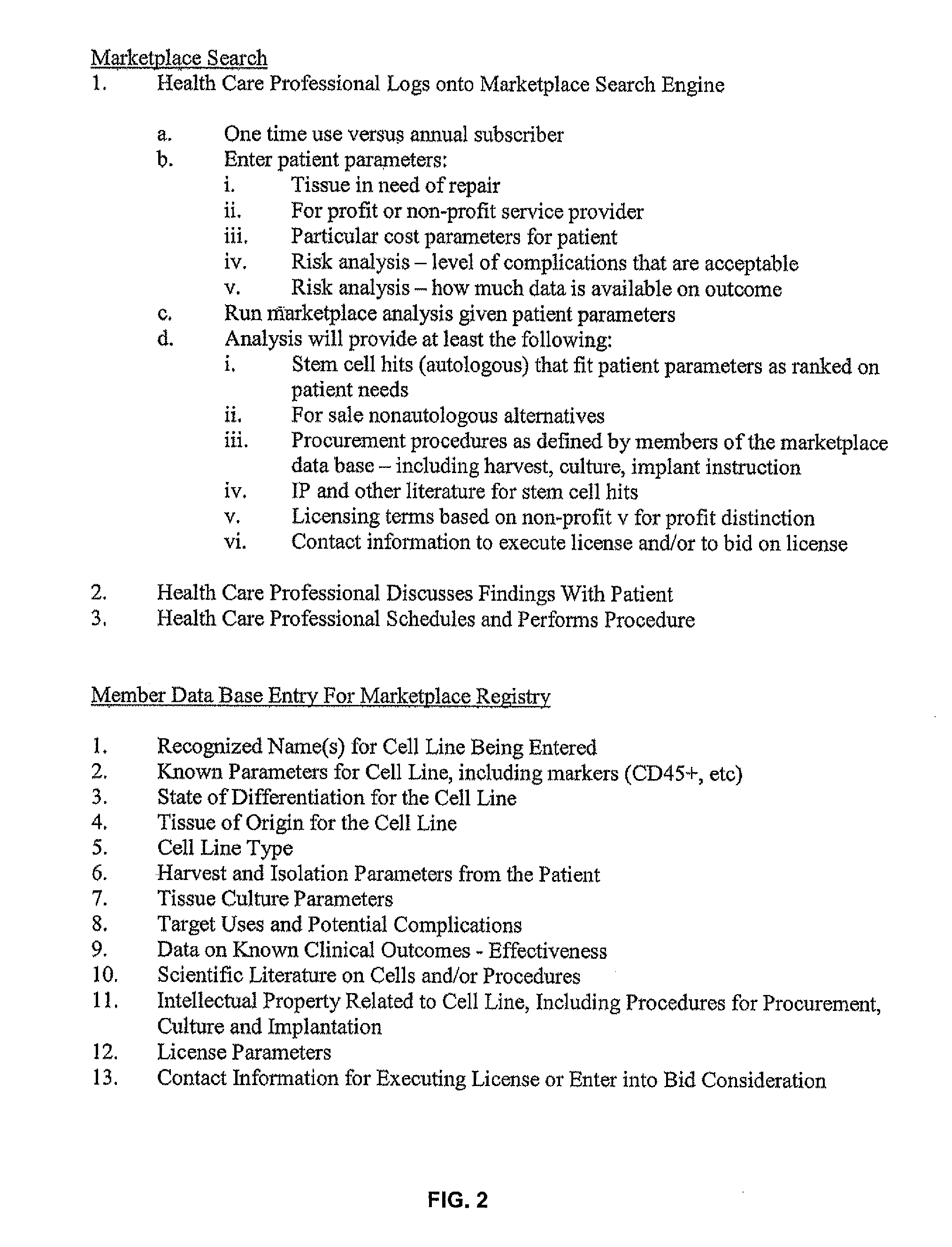Stem Cell Marketplace
a stem cell and marketplace technology, applied in the field of stem cell marketplaces, can solve the problems of limiting the advancement of wide-spread use of technology, affecting the development of stem cells, so as to facilitate understanding and advancemen
- Summary
- Abstract
- Description
- Claims
- Application Information
AI Technical Summary
Benefits of technology
Problems solved by technology
Method used
Image
Examples
example 1
Identification of Procedure for Autologous Stem Cell Implantation
[0076]A cardiologist who owns his own stem cell procurement, expansion and differentiation laboratory has a patient suffering from chronic heart failure (CHF). The patient has been identified for possible stem cell therapy given that the patient's heart has an ischemic injury involving a large amount of heart muscle. The cardiologist has two main objectives: 1) to use the best possible procedures for stem cell therapeutics on the heart while producing minimal complications; and 2) not to infringe any valid U.S. patent rights in the process, and thereby jeopardize his revenue stream.
[0077]The cardiologist enters the data base in accordance with an embodiment of the present invention. In this case the cardiologist is a member of the stem cell marketplace service and does not need to pay a fee for his procedure and information search. The cardiologist enters various parameters for the search in light of the two main crite...
example 2
Identification of Procedure for Autologous Stem Cell Implantation
[0080]An orthopedic surgeon owns a stem cell procurement, expansion and differentiation laboratory in conjunction with a local hospital. The relationship between the surgeon and hospital is a joint venture. The hospital and surgeon have identified stem cell therapeutics as a high priority for use in meniscus repairs. In general the target patient for this joint venture is not price sensitive, often requesting the best results without complications that technology and money can provide. In this particular case the patient is a professional athlete in need of off-season meniscus repair on his right knee.
[0081]As in Example 1, the orthopedic surgeon enters the stem cell marketplace data base in accordance with the present invention. Also as in Example 1, a data base search is performed on parameters meant to optimize the patient's goals. The surgeon is provided several different stem cell lines and procedures for procurin...
example 3
Identification of Procedure for Autologous Stem Cell Implantation
[0082]A cosmetic surgeon requires a stem cell line that she can use as “a filler.” She would like a stem cell line that can be used on numerous patients at a low cost, her clientele are often price sensitive and competition is strong for her type of practice. The cosmetic surgeon enters her parameters (as in Example 1) with a focus on her intended use and locates a couple of stem cell lines that provide low complication rate, but have been found to serve as filler sources of cells in the intended application.
[0083]In this case the cosmetic surgeon pays a one-time fee to use the stem cell marketplace data base. The results of her query provided her with non-autologous alternatives that have lower immunologic rejection.
PUM
 Login to View More
Login to View More Abstract
Description
Claims
Application Information
 Login to View More
Login to View More - R&D
- Intellectual Property
- Life Sciences
- Materials
- Tech Scout
- Unparalleled Data Quality
- Higher Quality Content
- 60% Fewer Hallucinations
Browse by: Latest US Patents, China's latest patents, Technical Efficacy Thesaurus, Application Domain, Technology Topic, Popular Technical Reports.
© 2025 PatSnap. All rights reserved.Legal|Privacy policy|Modern Slavery Act Transparency Statement|Sitemap|About US| Contact US: help@patsnap.com



